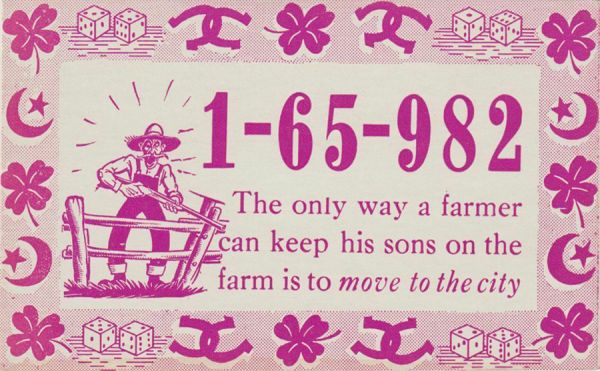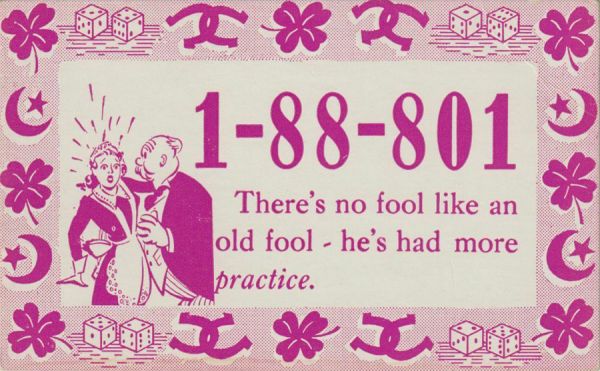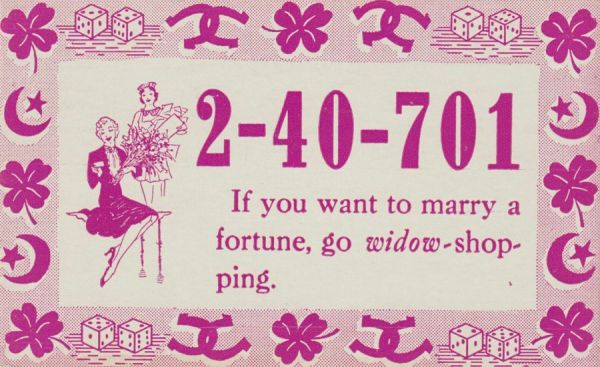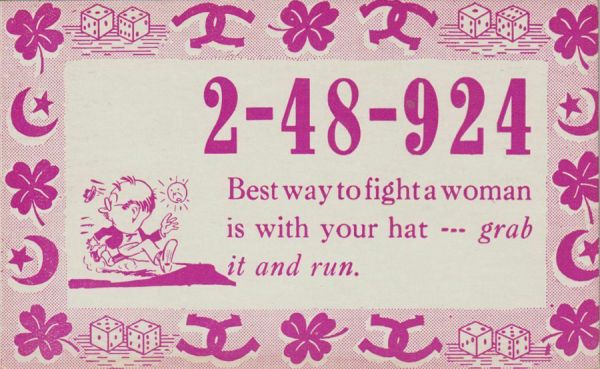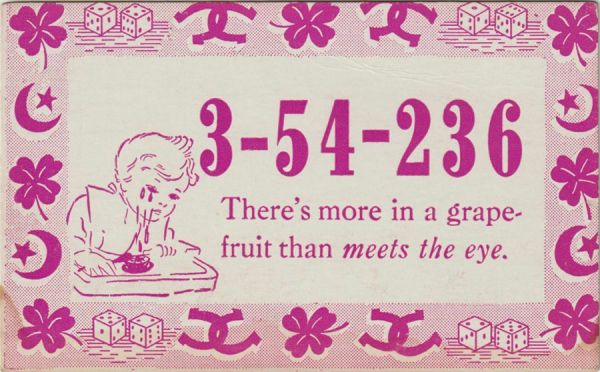Mutoscope Numerology Vending Machine Cards: Difference between revisions
Jump to navigation
Jump to search
(start page) |
(2 more, 600 wide and centered) |
||
| Line 5: | Line 5: | ||
[[File:Mutoscope-Lucky-Numbers-1-65-982-Farmer.jpg| | [[File:Mutoscope-Lucky-Numbers-1-65-982-Farmer.jpg|600px|center|thumb|1-65-982]] | ||
[[File:Mutoscope-Lucky-Numbers-1-88-801-Old-Fool.jpg| | [[File:Mutoscope-Lucky-Numbers-1-88-801-Old-Fool.jpg|600px|center||thumb|1-88-801]] | ||
[[File:Mutoscope-Lucky-Numbers-2-40-701-Marry-Fortune.jpg| | [[File:Mutoscope-Lucky-Numbers-2-40-701-Marry-Fortune.jpg|600px|center||thumb|2-4-701]] | ||
[[File:Mutoscope-Lucky-Numbers-2-48-924-Hat.jpg|600px|center||thumb|2-48-924]] | |||
[[File:Mutoscope-Lucky-Numbers-3-54-236-Grapefruit.jpg|600px|center||thumb|]] | |||
Revision as of 05:44, 15 January 2024
The Mutoscope Company was founded in 1895
By 1925, Mutoscope had entered the vending machine business. Card venders came in many styles and there were varied lines of card sets. Most were about the size of a postcard, and were printed on fairly think chipboard, usually in only one or two colours of ink. Although early sets are blank on the back, those from the late 1930s and the era of the Second World War usually have a printed postcard back.
